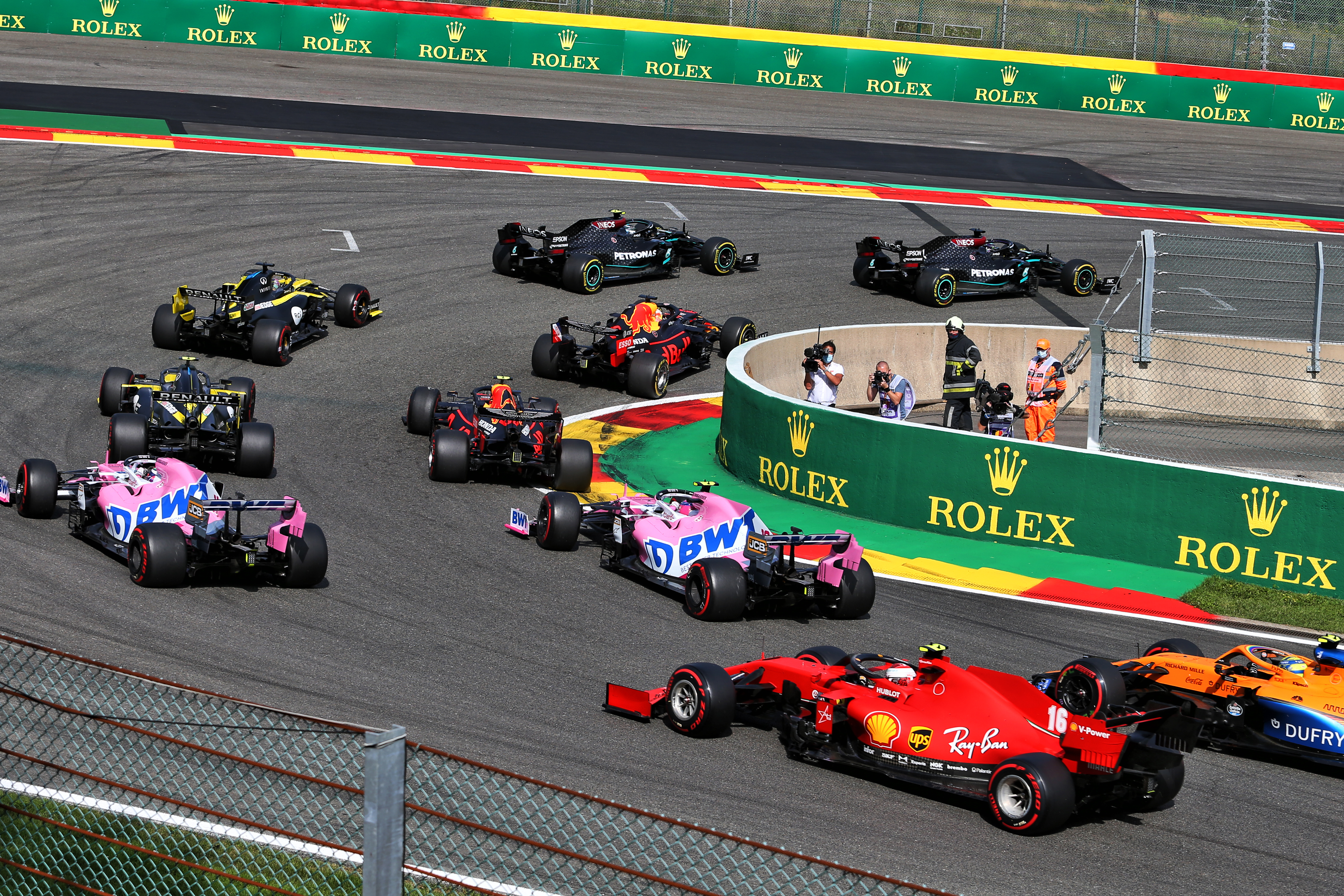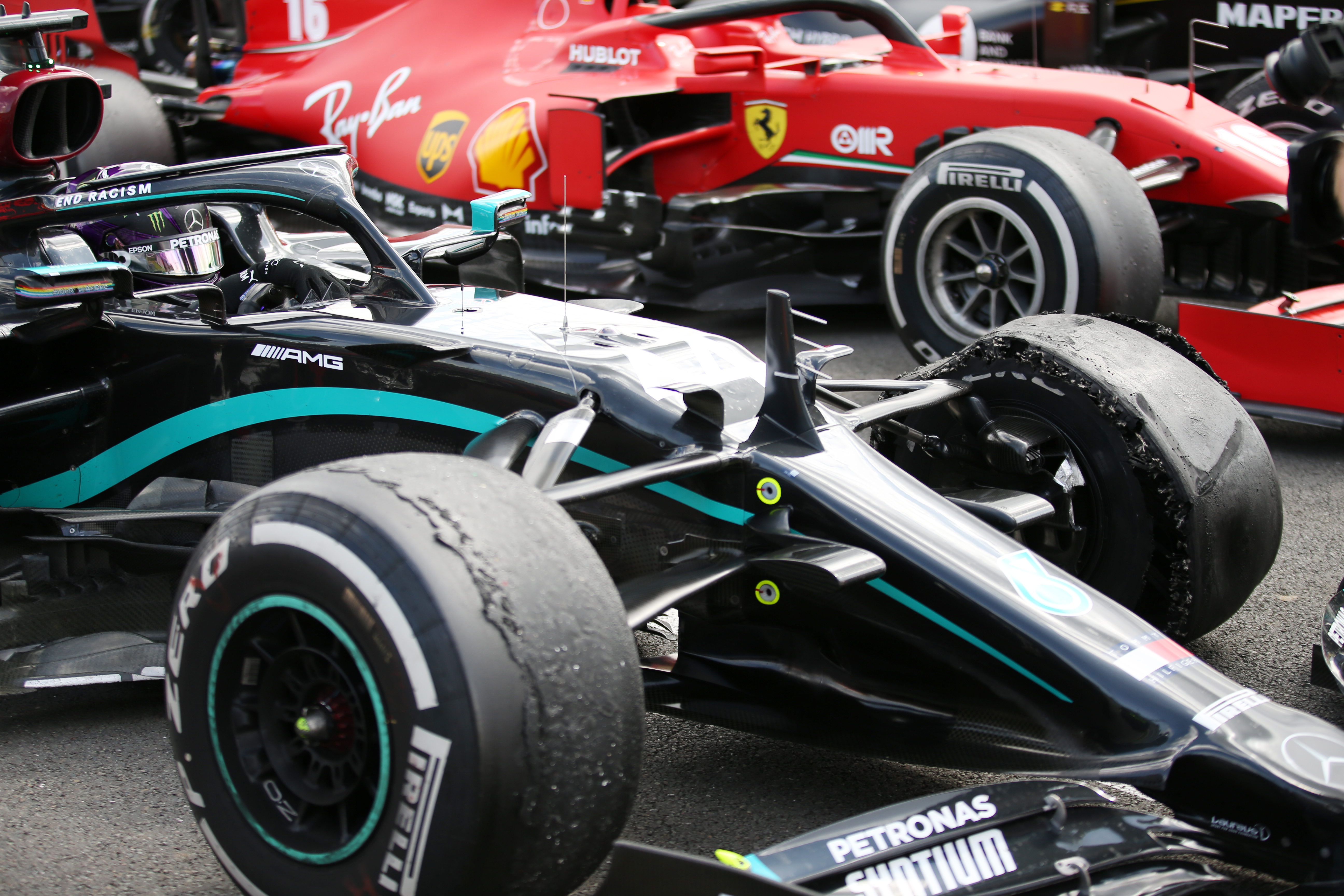Up Next

The push from Lewis Hamilton and other Formula 1 drivers for a better tyre from 2022 must result in a compromise because their demands are not completely compatible, says Pirelli.
World champion Hamilton has been a vocal proponent of the Grand Prix Drivers Association’s position that drivers need to be consulted more in the development of Pirelli’s tyre specification, and that constant pressure needs to be applied to move away from sensitive rubber.
The previous two races in Spain and Belgium have been dull, one-stop events for the race leaders with tyre management the primary concern as teams attempt to avoid needing a second pitstop at all costs.
This is because drivers sometimes find it too difficult to follow other cars and put pressure on their rivals without taking too much out of the tyres, which can be very sensitive to thermal degradation as well as physical wear.
GPDA director Romain Grosjean said he was “very happy” to see Hamilton’s post-Spanish GP comments after the drivers “expressed our concern” with Pirelli and called for better tyres.
In response to that push, Pirelli F1 boss Mario Isola says priority is being given to what drivers are asking for.
Pirelli, F1 and the FIA draw up a ‘target letter’ that sets out what Pirelli should aim to achieve with its tyres, which will change to suit 18-inch wheels for 2022 – a crucial season as all-new cars will be introduced and the tyres will be a vital part of making sure the new F1 rules succeed in creating better racing.

“We have a number of versions of the target letter, you cannot imagine, because any discussion was introducing something new,” said Isola during the Belgian GP weekend.
“That’s why in the latest version of the target letter, we decided to review it again, giving priority towards the drivers’ feeling of priority – like reducing overheating, for example, reducing degradation.
“We had a lot of discussion on that. Because if you reduce degradation, there is no reason to have more than one stop.
“If you don’t have degradation for the tyre, why should you lose time to stop once more and maybe lose position on track?
“So, we had this discussion, the possibility to have a tyre that after a certain mileage is degrading quicker.”
Hamilton’s team boss Toto Wolff has admitted that the ideal tyre for drivers is probably a “physical impossibility” – “a tyre that has the ultimate grip and lasts for 50% of the race”.
Wolff said he is “not sure it will provide a great show”, while Isola argued that some of what the drivers are pursuing is difficult to achieve together.
“Having a tyre with a much higher grip, but also a lot of consistency, is really difficult,” Isola said.
“When you have a lot of grip usually you have high degradation. It is the qualifying tyre idea.
“So, I know drivers like the grip, I know drivers are asking for an ideal tyre. That is our effort and plan for 2022.
“I don’t want to hear this message that we don’t listen to the drivers because every time that the drivers are available, we are always available.
“We are very happy to follow what Lewis is asking for but then we need to put first on paper, and in reality, something that has to be a compromise.
“We cannot have 100% grip, and 100% consistency, and no degradation and all that.”

Pirelli assumed the role as F1’s sole tyre supplier for the 2011 season and was tasked with creating high-degradation rubber to make races unpredictable and encourage more pitstops.
While criticism of the product has been fair at times, the championship’s stakeholders have often defended Pirelli as it was given conflicting targets.
In addition, the introduction of new high-downforce cars in 2017 and the subsequent development of those designs, despite rule changes to reduce some of the performance, has led to the fastest machines in F1 history producing the highest loads ever.
FIA head of single-seater technical matters Nikolas Tombazis said the work Pirelli has conducted so far for the switch to 18-inch wheels gives confidence it will be able to meet the new, more realistic targets.
“With hindsight, the first target letter did actually ask Pirelli to do impossible things,” said Tombazis.
“In terms of low degradation and being able to push all the time, but still having multiple pitstops and crossover between tyres.
“It was with hindsight, probably a bit setting goalposts where it’s impossible to score. And I think we have to recognise that.
“On top of that, we have to also remember the load of the cars are much higher in terms of aerodynamics and car mass. And hence the energies these tyres are getting far superior to anything that ever has been racing before.
“That has made the job even more difficult. But I think the work done with the initial 18-inch wheels shows that they are going definitely in the right direction.
“I think that the initial 18-inch tests were very promising. And hopefully, we will get to a much better place in a year and a half.”



